Class 10 History Chapter 5 Notes - Print Culture and the Modern World
Introduction
It is challenging for us to picture a world without printed materials. We see prints everywhere we look – in books, journals, newspapers, prints of famous paintings, and in everyday items like theatre programs, official circulars, calendars, diaries, advertisements, and cinema posters on street corners. We often take this world of print for granted and forget that there was a time before it existed. We might not realise that print itself has a history that has shaped our modern world. In this chapter, we will explore the development of print, from its origins in East Asia to its spread in Europe and India.
The invention of the printing press changed people's lives, altering how they interacted with information and knowledge, as well as their connections with institutions and authorities. With the printing press, a new reading public emerged, enabling a larger group of society to access literature and information that was once available only to a few.
Importance of Historical Context
Understanding the historical context of print technology is essential. The development of print in East Asia set the stage for its later growth in Europe and India. The spread of print culture had significant effects on social lives and cultures, influencing areas such as:
- Education
- Political discourse
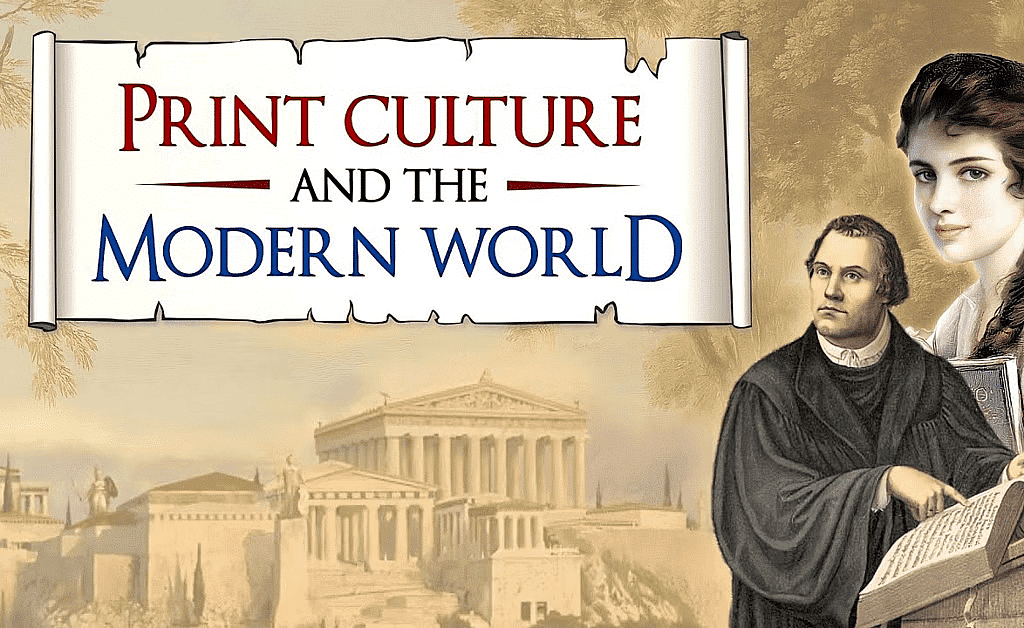
The First Printed Books
- The first printed books originated in China, Japan, and Korea through a method of hand printing.
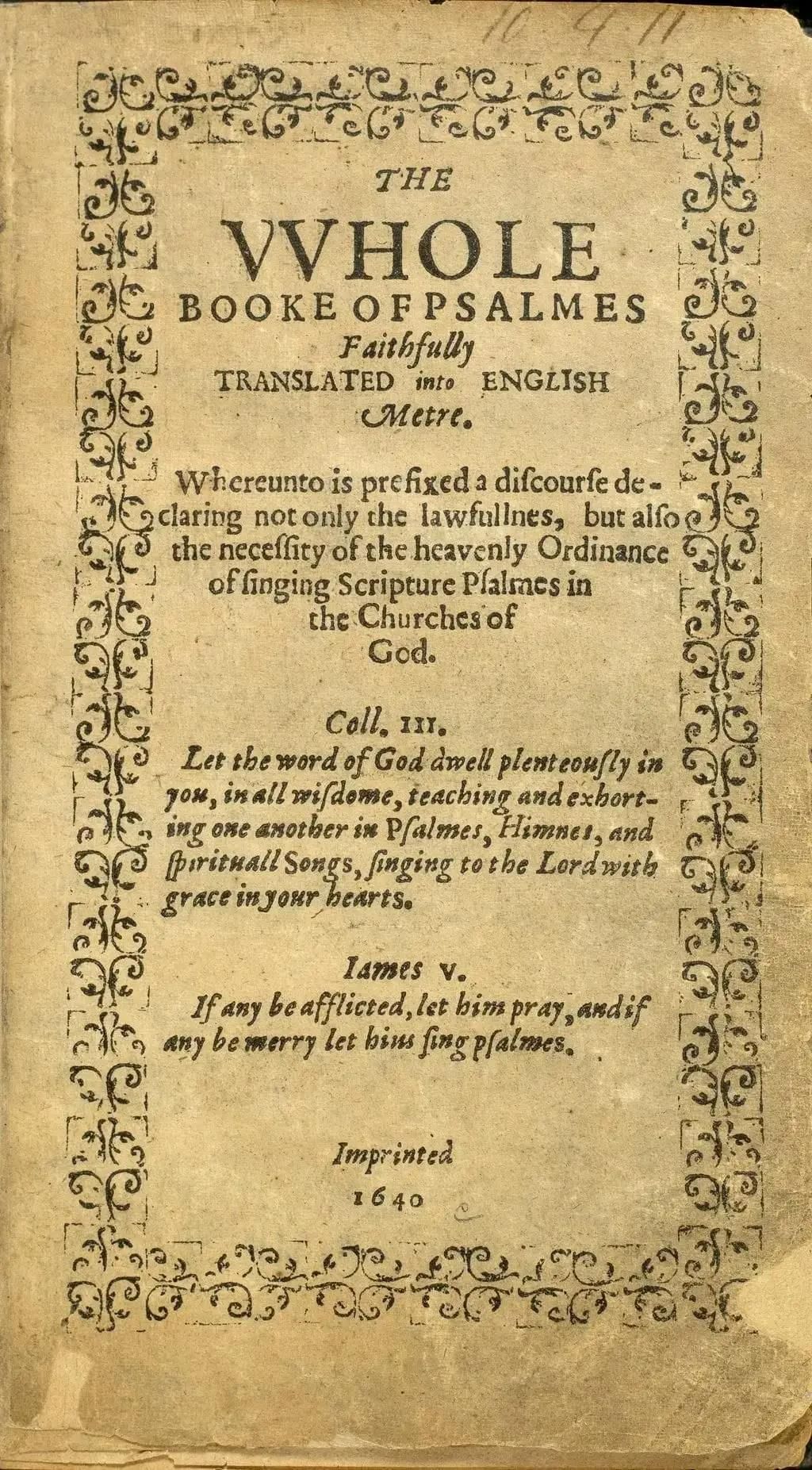 First Printed Book
First Printed Book - In China, books were printed from AD 594 onwards by pressing paper against inked woodblocks, leading to the creation of the traditional Chinese 'accordion book' due to the limitations of printing on both sides of the paper.
- Skilled craftsmen in China could replicate calligraphy beautifully with hand printing.
- China's imperial state was a significant producer of printed material, especially for textbooks used in civil service examinations.
- Print usage in China grew in the 16th and 17th centuries, covering city life, trade details for merchants, and leisure reading for more people.
- With the rise of urban culture in China, print was no longer just for scholar-officials. It was embraced by many, including women who began publishing their own works.
- By the late nineteenth century, Western printing techniques and mechanical presses were introduced in China, marking a transition from hand printing to mechanical printing.
- Shanghai emerged as a center of the new print culture, facilitating the dissemination of Western-style education.
Let's Revise: Which method was used in China for producing the first printed books, and when did it begin?
 View Answer
View Answer 
Ans: Books in China were printed from AD 594 by pressing paper against inked woodblocks.
Print in Japan
- Buddhist missionaries from China introduced hand-printing technology into Japan around AD 768-770.
- The oldest Japanese book, printed in AD 868, is the Buddhist Diamond Sutra, containing six sheets of text and woodcut illustrations.
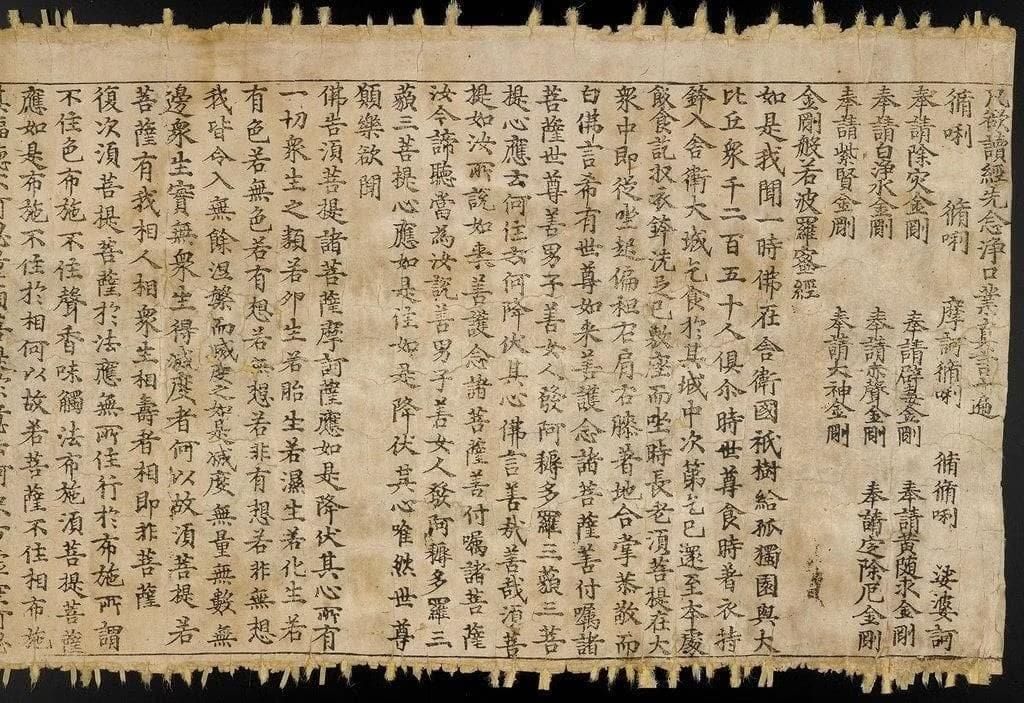 A Page from The Diamond Sutra
A Page from The Diamond Sutra
- Pictures were printed on textiles, playing cards, and paper money.
- In medieval Japan, poets and prose writers were regularly published, and books were cheap and abundant.
- Printing of visual material led to interesting publishing practices.
- In the late eighteenth century, in the flourishing urban circles at Edo (later to be known as Tokyo), illustrated collections of paintings depicted an elegant urban culture.
- Libraries and bookstores were packed with hand-printed material of various types, including books on women, musical instruments, calculations, tea ceremony, flower arrangements, proper etiquette, cooking, and famous places.
Print Comes to Europe
- Arrival of Paper in Europe: In the past, valuable goods like silk and spices came to Europe from China. Around the eleventh century, Chinese paper also made its way to Europe, facilitating the creation of manuscripts by scribes.
- Introduction of Woodblock Printing: In 1295, after his travels in China, Marco Polo returned to Italy and introduced the concept of woodblock printing. This innovation led to the production of books in Italy, which eventually spread throughout Europe.
- Shift in Book Production: Initially, luxurious editions were handwritten on costly vellum for the elite, while printed books were considered inferior. However, as demand rose, printed copies became popular among merchants and students.
- Expansion of Book Trade: Bookstores across Europe started exporting books to various regions, and book fairs emerged. Handwritten manuscripts were produced in new ways to meet the increasing demand, with scribes now employed by booksellers as well.
- Rise of Woodblock Printing: Due to the limitations of handwritten manuscripts, woodblock printing gained popularity by the fifteenth century. This method was used for textiles, playing cards, and religious images with brief texts.
- Invention of the Printing Press: The need for faster and cheaper text reproduction led to the development of the printing press by Johann Gutenberg in Strasbourg, Germany, during the 1430s. This marked a significant advancement in print technology.
Let's Revise: Who introduced the idea of woodblock printing to Europe, and when?
 View Answer
View Answer 
Ans: Marco Polo introduced woodblock printing to Europe in 1295 after his travels in China.
Gutenberg and the Printing Press
- Gutenberg, the son of a merchant, drew inspiration from his childhood experiences with presses and stone polishing. He later became a skilled goldsmith and learned to create lead moulds.
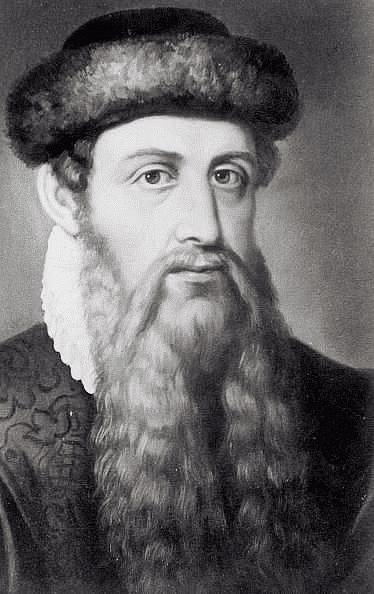 Johannes Gutenberg
Johannes Gutenberg
- Adapting existing technology, Gutenberg innovated the printing press, basing it on the olive press and using moulds for metal types.
- In 1448, Gutenberg perfected his system and printed the Bible, producing about 180 copies in three years, a remarkable feat for the time.
- Printed books initially resembled handwritten manuscripts, with metal letters mimicking ornate handwriting styles and hand-painted illustrations.
- Printing presses spread across Europe between 1450 and 1550, significantly increasing book production.
- The shift from hand printing to mechanical printing marked the print revolution, with millions of copies flooding European markets.
The Print Revolution and Its Impact
It was more than just a new way of making books. The print revolution changed how people interacted with information and knowledge, as well as with authorities. It also affected how people perceived things and opened up new perspectives.
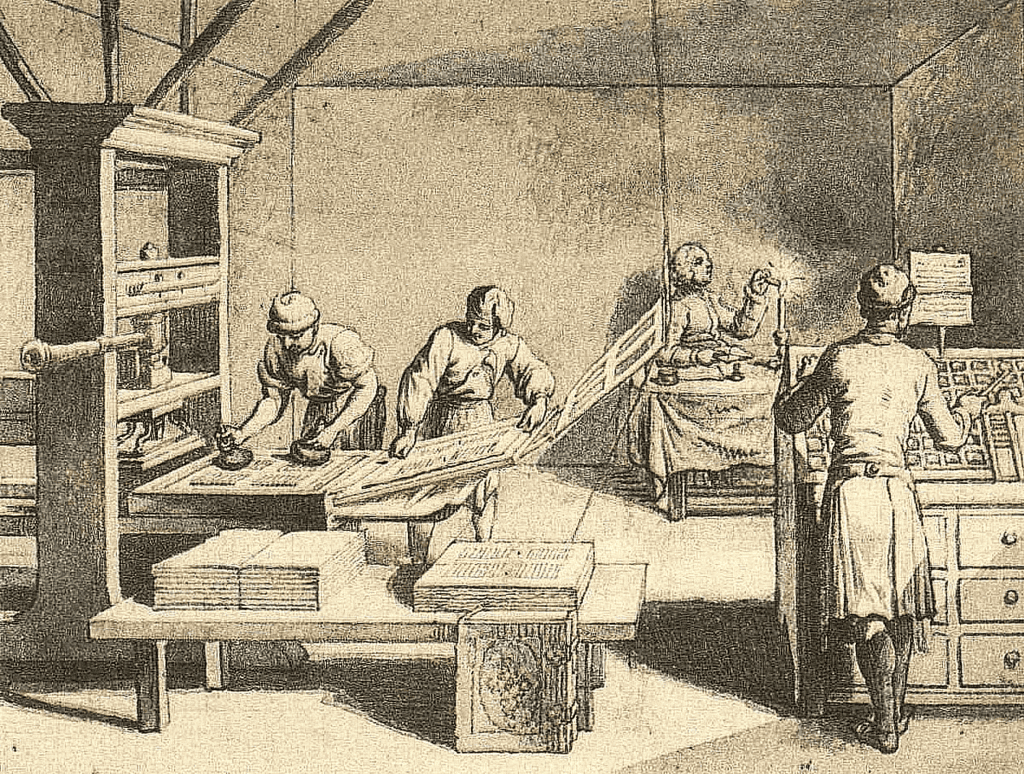 Printing Revolution
Printing Revolution
A New Reading Public
Emergence of a New Reading Public:
- The printing press lowered book costs and reduced production time and labor.
- Enabled mass production of books, flooding the market and reaching a growing readership.
Creation of a New Reading Culture:
- Before printing, reading was confined to the elite, while common people relied on oral culture for knowledge transfer.
- Sacred texts, ballads, and folk tales were shared orally, and collective listening was the norm.
- The printing press made books more accessible, creating a reading public alongside the existing hearing public.
Transition Challenges:
- Literacy rates were low in most European countries until the twentieth century.
- Publishers needed to make printed books appealing to the general public.
Publishers' Strategies:
- To reach non-readers, publishers printed popular ballads and folk tales with rich illustrations.
- These printed materials were sung and recited at social gatherings, integrating oral culture into print.
Blurring Cultural Lines:
- The distinction between oral and reading cultures became blurred.
- The hearing public and reading public began to intermingle, creating a unified culture.
Religious Debates and the Fear of Print
- Print enabled widespread circulation of ideas, fostering debates and discussions.
- It allowed people to print and share their ideas, potentially influencing others and sparking change in different areas of life.
- Despite the benefits, not everyone embraced printed books.
- Many harbored concerns about the impact of easier access to printed materials and the broader dissemination of books on people's minds.
- There was a fear that uncontrolled printing and reading could lead to the spread of rebellious and irreligious notions, endangering the authority of respected literature.
- This apprehension was shared by religious figures, monarchs, writers, and artists, sparking criticism of the emerging printed literature.
- In 1517, Martin Luther penned the Ninety-Five Theses, criticizing Roman Catholic Church practices. A printed copy was posted in Wittenberg, inviting debate.
- Luther's writings were widely reproduced, sparking division in the Church and the Protestant Reformation.
- Luther's translation of the New Testament was a big success, selling 5,000 copies in just a few weeks. A second edition was out in three months.
- Feeling very thankful for the printing press, Luther declared, "Printing is a wonderful gift from God and the best one."
- Some experts believe that the printing press created a fresh intellectual environment, aiding the spread of new ideas that eventually led to the Reformation.
Print and Dissent
- Print and popular religious literature sparked diverse individual interpretations of faith, even among less-educated working individuals.
- In the 16th century, Menocchio, a miller in Italy, delved into books accessible in his area.
- He reinterpreted the Bible's message, shaping a controversial perspective on God and Creation that provoked the Roman Catholic Church.
- In response to the spread of these heretical ideas, the Roman Church initiated inquisitions to suppress such dissent.
- Menocchio faced interrogation twice and was eventually executed.
- Troubled by the impact of widespread reading and questioning of faith, the Roman Church tightened its grip over publishers and booksellers.
- It also established an Index of Prohibited Books starting from 1558.
The Reading Mania
- During the 17th and 18th centuries, literacy rates increased across most of Europe.
- Churches of various denominations established schools in villages, spreading literacy among peasants and artisans.
- By the late 18th century, some parts of Europe achieved high literacy rates ranging from 60 to 80 percent.
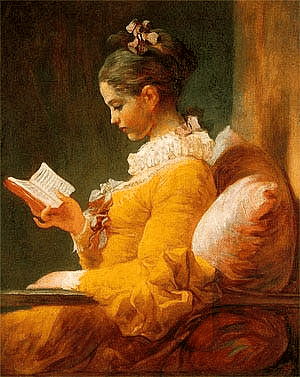
Spread of Literacy and Schools
- With the expansion of literacy and schools in European countries, there was a surge in the desire for reading materials.
- Printers responded by producing a growing number of books to meet this demand.
New Forms of Popular Literature
- Emerging forms of popular literature targeted new audiences.
- Booksellers utilized pedlars who traveled through villages selling small books.
- Various materials such as almanacs, ballads, folktales, penny chapbooks, and romances reached ordinary readers for entertainment.
Development of Periodical Press
- The periodical press evolved from the early 18th century, blending current affairs with entertainment.
- Newspapers and journals disseminated information on wars, trade, and events from across different regions.
- The works of scientists, philosophers, and thinkers like Isaac Newton, Thomas Paine, Voltaire, and Rousseau became more accessible to a broader audience through printed materials.
'Tremble, therefore, tyrants of the world!'
- In the mid-18th century, many people believed that books played a crucial role in spreading progress and enlightenment.
- They believed books could transform society, liberate it from oppressive rulers, and bring about an era where reason and intellect would lead.
- Louise-Sebastien Mercier, a novelist from 18th-century France, strongly advocated for the impact of books.
- He saw the printing press as a tool for progress and believed that public opinion could overthrow despotism.
- In Mercier's novels, characters who read books undergo significant changes. They immerse themselves in the worlds created by books and gain enlightenment through reading.
- Mercier emphasized the power of print in enlightening people and destabilizing tyrannical regimes.
- He famously proclaimed, "Tremble, therefore, tyrants of the world! Tremble before the virtual writer!"
Print Culture and the French Revolution
Historians argue that print culture set the stage for the French Revolution.
Three main arguments support this view:
- Print popularized Enlightenment ideas that criticized tradition, superstition, and despotism.
- Print fostered a culture of dialogue and debate, encouraging the questioning of existing norms.
- Literature in the 1780s ridiculed the royalty, fueling anti-monarchy sentiments.
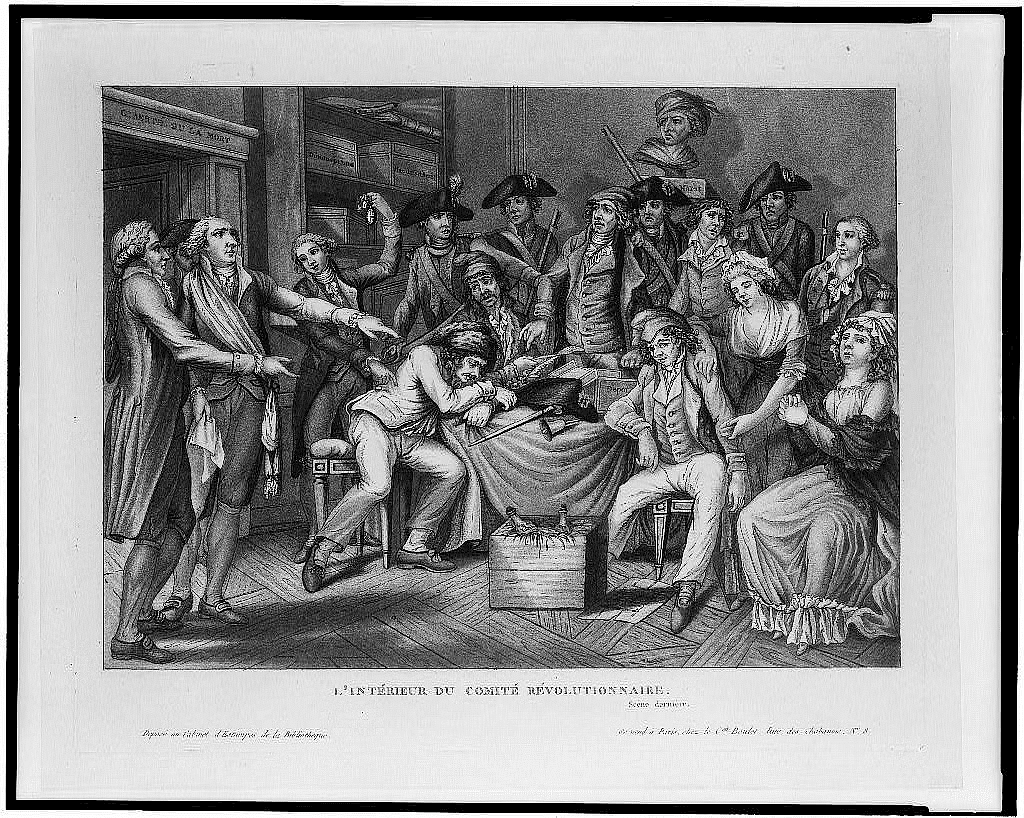
- Mercier's writing exemplifies the transformative power of reading and the impact of new ideas.
- Print facilitated the spread of diverse ideas, including criticisms of the monarchy.
- People were exposed to various viewpoints through print, shaping their interpretations and beliefs.
- Print didn't dictate minds but opened avenues for independent thinking.
The Nineteenth Century
The 1800s witnessed significant advancements in mass literacy across Europe, leading to a surge in new readers among children, women, and workers.
Children, Women, and Workers
- With the enforcement of compulsory primary education in the late 19th century, children emerged as a crucial readership group.
- The production of school textbooks became pivotal for the publishing industry.
- A dedicated children's press, focused solely on literature for children, was established in France in 1857.
- The Grimm Brothers in Germany spent years compiling traditional folk tales collected from peasants, which were then edited and published in 1812 after removing unsuitable content.
- Women also became significant readers and writers during this period.
- Penny magazines and manuals on proper behavior and housekeeping catered specifically to women.
- Notable female novelists like Jane Austen, the Bronte sisters, and George Eliot played a crucial role in defining a new type of woman characterized by willpower, strength, determination, and intellect.
- Lending libraries, which had been present since the 17th century, evolved in the 19th century to educate white-collar workers, artisans, and the lower-middle class.
- As the working day gradually shortened from the mid-1800s, workers found time for self-improvement and self-expression by writing political tracts and autobiographies in large numbers.
Further Innovations
- By the end of the 18th century, metal became the primary material for making printing presses.
- Throughout the 19th century, there were significant advancements in the field of printing technology.
- In the mid-19th century, Richard M. Hoe from New York perfected the power-driven cylindrical press, capable of printing 8,000 sheets per hour, especially beneficial for newspapers.
- Later in the 19th century, the offset press was introduced, capable of printing up to six colors simultaneously.
- Electrically operated presses from the early 20th century greatly sped up printing processes.
- Various other developments occurred, such as improvements in paper feeding methods, better plate quality, automatic paper reels, and the introduction of photoelectric color register controls.
- These cumulative mechanical enhancements significantly altered the appearance of printed texts.
- Printers and publishers continuously devised new marketing strategies. In the 19th century, important novels were serialized in periodicals, influencing a distinct style of novel writing.
- In the 1920s in England, popular works were sold in affordable series like the Shilling Series. The innovation of the dust cover or book jacket also emerged during the 20th century.
- During the Great Depression in the 1930s, publishers were concerned about declining book sales. To encourage purchases, they began releasing inexpensive paperback editions.
India and the World of Print
Manuscripts Before the Age of Print
- India had a long tradition of handwritten manuscripts in languages like Sanskrit, Arabic, Persian, and vernacular languages.
- Manuscripts were copied on palm leaves or handmade paper, sometimes with beautiful illustrations.
- To preserve them, pages were pressed between wooden covers or sewn together.
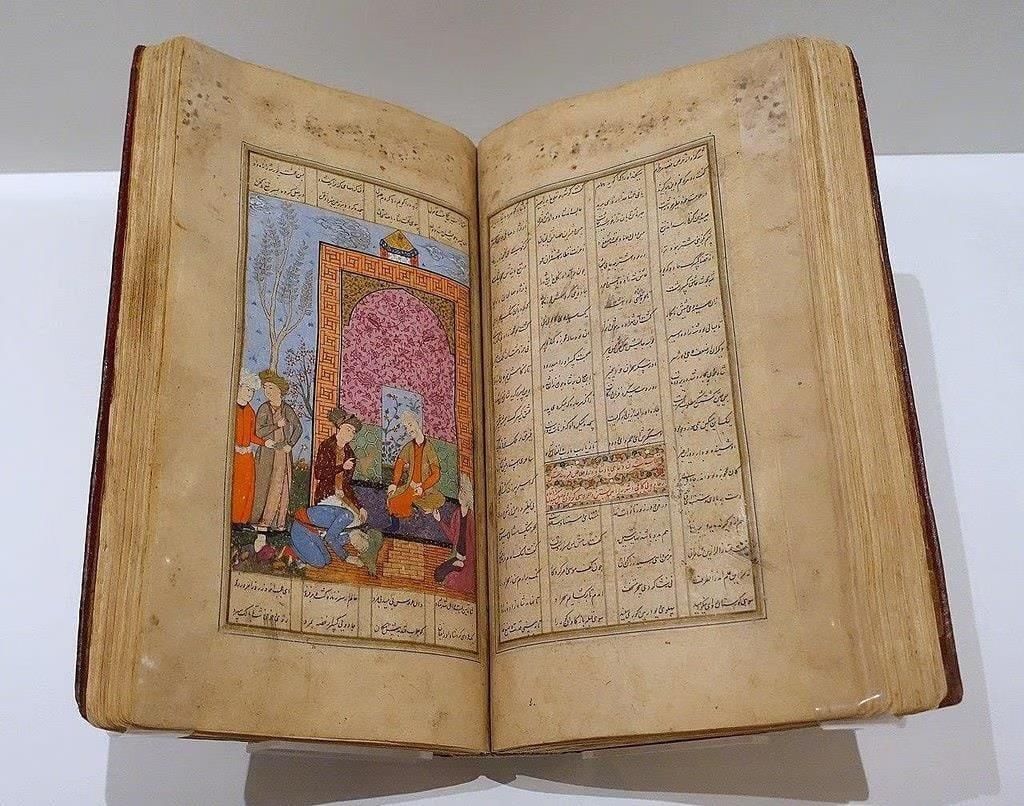 Pages from the Diwan of Hafiz, 1824
Pages from the Diwan of Hafiz, 1824
- Despite the introduction of print, manuscripts continued to be produced till the late nineteenth century.
- Manuscripts were expensive, fragile, and written in various styles, making them hard to read.
- They were not widely used in everyday life due to these challenges.
- In pre-colonial Bengal, village primary schools existed, but students often learned to write without reading texts.
- Teachers recited texts from memory, and students wrote them down, becoming literate without reading.
Print Comes to India
- Handwritten manuscripts were still made in India long after the arrival of print technology. An example is an eighteenth-century manuscript in the Malayalam script.
- The printing press was introduced to Goa by Portuguese missionaries in the mid-sixteenth century.
- Jesuit priests printed various texts in Konkani and Kanara languages. By 1674, around 50 books had been printed.
- Catholic priests printed the first Tamil book in 1579 in Cochin, and the first Malayalam book in 1713.
- Dutch Protestant missionaries had printed 32 Tamil texts by 1710, many of which were translations.
- English language printing did not flourish in India until later, despite the English East India Company importing presses from the late seventeenth century.
- In 1780, James Augustus Hickey initiated the Bengal Gazette, a weekly magazine promoting itself as independent of colonial influence.
- Hickey published various advertisements, including those concerning the sale of slaves, and gossiped about Company officials.
- Governor-General Warren Hastings persecuted Hickey for this, promoting officially sanctioned newspapers to counter negative information about the colonial government.
- By the end of the eighteenth century, numerous newspapers and journals were being printed.
- Indian individuals also began publishing newspapers, with the first being the Bengal Gazette by Gangadhar Bhattacharya, associated with Rammohun Roy.
Let's Revise: Who started the first Indian-run newspaper, and what was it called?
 View Answer
View Answer 
Ans: Gangadhar Bhattacharya started the first Indian-run newspaper called the Bengal Gazette.
Religious Reform and Public Debates
- In the early 19th century, there were intense debates about religious issues in colonial society.
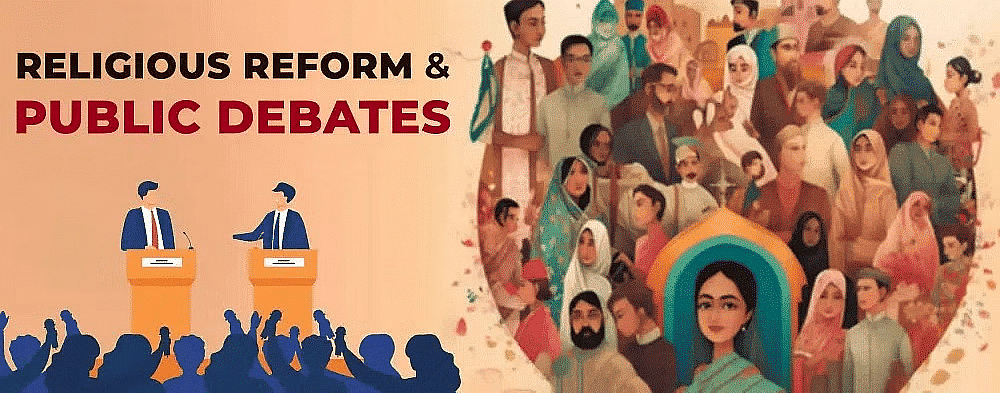
- Different groups responded to societal changes with various interpretations of religious beliefs.
- Some criticized existing practices and advocated for reform, while others opposed reformers.
- These debates took place publicly and through printed materials, such as tracts and newspapers.
- Printed materials not only spread new ideas but also shaped the nature of the debate, allowing a wider public to participate.
- Controversies arose between social and religious reformers and Hindu orthodoxy on topics like widow immolation, monotheism, priesthood, and idolatry.
- In Bengal, debates led to the proliferation of tracts and newspapers in everyday language to reach a broader audience.
- Rammohun Roy published the Sambad Kaumudi, while the Hindu orthodoxy countered with the Samachar Chandrika.
- Newspapers like Jam-i-Jahan Nama, Shamsul Akhbar, and Bombay Samachar were established to express differing viewpoints.
- In north India, the ulama used lithographic presses to publish religious texts and newspapers to preserve Muslim traditions.
- The Deoband Seminary issued fatwas to guide Muslims in their daily lives and explain Islamic doctrines.
- Various Muslim sects and seminaries emerged with distinct faith interpretations, engaging in public debates through Urdu print.
- Among Hindus, print culture encouraged the reading of religious texts, with vernacular editions becoming popular.
Let's Revise: How did print contribute to religious debates in 19th-century India?
 View Answer
View Answer 
Ans: Print enabled wider public participation in religious debates through tracts and newspapers in everyday language.
New Forms of Publication
- New Forms of Publication Printing created an interest in new types of writing.
- As literacy increased, people desired to see their own lives, experiences, emotions, and relationships mirrored in what they read.

- The novel, a genre that originated in Europe, perfectly addressed this need and soon adopted unique Indian forms and styles.
- It introduced readers to fresh realms of experience and offered a vibrant portrayal of the variety of human experiences.
- Various new literary formats emerged, including lyrics, short stories, and essays on social and political issues.
- Each of these forms, in their own way, emphasized human lives, personal emotions, societal rules, and political influences.
- By the late 19th century, a novel visual culture was emerging. The proliferation of printing presses enabled the easy replication of visual images.
- Artists like Raja Ravi Varma produced images for mass distribution.
- Impoverished wood engravers, who crafted woodblocks, established workshops near printing presses and were hired by print shops.
- Inexpensive prints and calendars, readily available in markets, were accessible even to the less affluent to adorn their homes or workplaces.
- These prints began molding popular perceptions of modernity, tradition, religion, politics, society, and culture.
- By the 1870s, satirical drawings and cartoons appeared in periodicals and newspapers, offering commentary on social and political matters.
- Some caricatures mocked educated Indians' fascination with Western customs and attire, while others expressed apprehension about societal transformations.
- There were also imperial caricatures deriding nationalists and nationalist cartoons critiquing imperial governance.
Women and Print
- Women's lives and emotions started being depicted more vividly in writings, leading to increased reading among women in middle-class households.
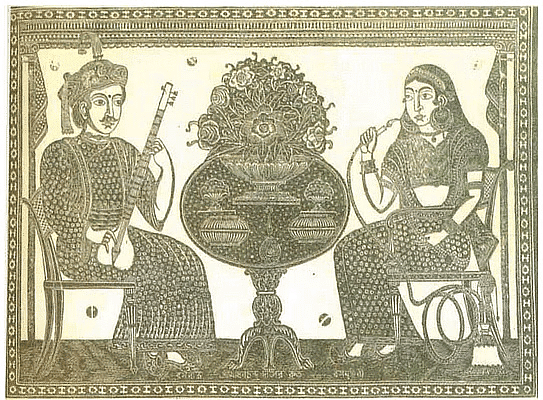
- Liberal husbands and fathers began educating women at home and later in schools established for women in cities and towns post the mid-nineteenth century.
- Several journals started publishing women's writings, advocating for women's education. They also provided study materials for home-based education.
- Not all families supported women's education. Conservative Hindus and Muslims held reservations, fearing negative consequences like widowhood or corruption.
- Despite prohibitions, some women rebelled and pursued education. For instance, a girl in a conservative Muslim family secretly learned Urdu, and Rashsundari Debi from East Bengal learned to read and wrote her autobiography in the 19th century.
- Social reforms and novels generated curiosity about women's lives, leading to women like Kailashbashini Debi and others writing about women's struggles and injustices faced at home.
- Writers like Tarabai Shinde and Pandita Ramabai highlighted the challenges faced by upper-caste Hindu women, particularly widows, in Maharashtra during the 1880s.
- Women expressed the value of reading in their confined lives, with a Tamil novel character emphasizing the happiness books brought into her restricted world.
- While Urdu, Tamil, Bengali, and Marathi printing cultures developed early, Hindi printing focused on women's education from the 1870s onwards.
Print and the Poor People
- Very affordable small books were introduced to markets in nineteenth-century Madras towns, where they were sold at intersections, making it convenient for impoverished individuals commuting to markets to purchase them.
- Public libraries began to emerge from the early twentieth century, significantly broadening access to books. These libraries were primarily situated in cities, towns, and occasionally in prosperous villages.
- Establishing a library was a means for affluent local sponsors to gain prestige.
- From the late nineteenth century onward, issues related to caste discrimination started being addressed in numerous printed pamphlets and essays.
- Jyotiba Phule, a Maratha advocate of 'low caste' protest movements, criticized the injustices of the caste system in his work Gulamgiri (1871).
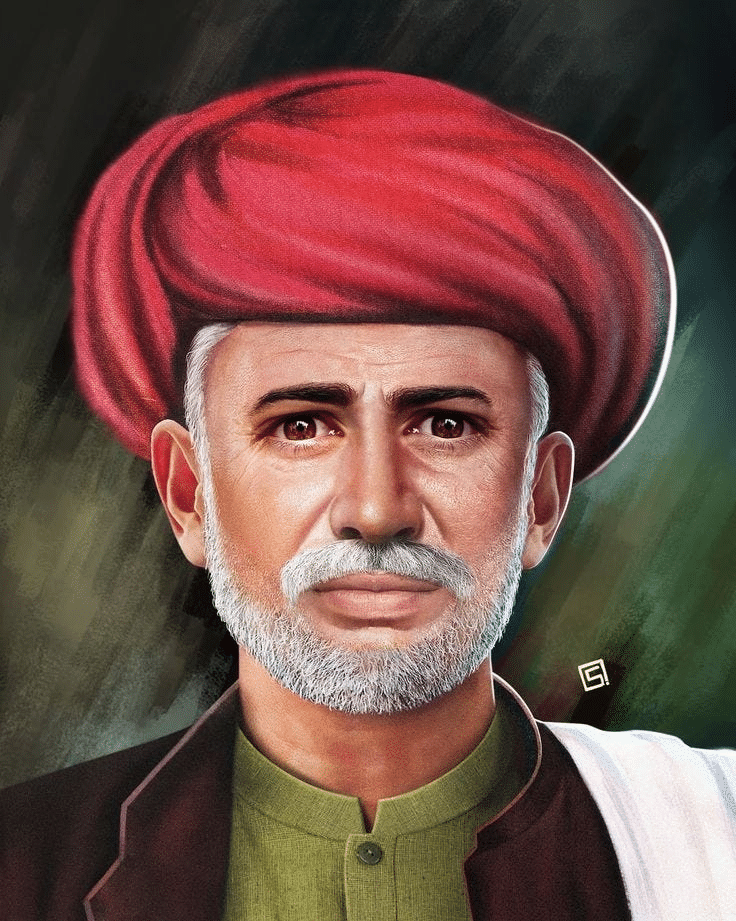 Jyotibha Phule
Jyotibha Phule - In the twentieth century, B.R. Ambedkar in Maharashtra and E.V. Ramaswamy Naicker in Madras (Periyar) composed influential pieces on caste, which garnered readership throughout India.
- Various local protest movements and groups produced popular publications that critiqued ancient texts and envisioned a fairer future.
- Despite being overworked and lacking education, Kashibaba, a millworker from Kanpur, authored and published Chhote Aur Bade Ka Sawal in 1938 to highlight the connection between caste and class exploitation.
- Sudarshan Chakr, a fellow Kanpur millworker, penned poems between 1935 and 1955 under the pseudonym Sudarshan Chakr, which were compiled and released in a collection named Sacchi Kavitayan.
- In the 1930s, cotton millworkers in Bangalore established libraries to self-educate, inspired by the actions of workers in Bombay. These initiatives were backed by social reformers aiming to curb excessive alcohol consumption, promote literacy, and sometimes advocate nationalism.
Print and Censorship
- Before 1798: The East India Company in colonial India did not initially focus on censorship. Early censorship efforts targeted critical Englishmen to prevent attacks on the Company's trade monopoly.
- 1820s: Calcutta Supreme Court introduced regulations on press freedom. The Company promoted newspapers supporting British rule. In 1835, press laws were revised based on petitions from newspaper editors.
- Post-1857 Revolt: Attitudes towards press freedom changed. Englishmen called for restrictions on the 'native' press. The Vernacular Press Act of 1878 allowed extensive government censorship of vernacular newspapers.
- Nationalist Newspapers: Despite repression, nationalist newspapers multiplied across India, criticizing colonial rule and promoting nationalist activities. Suppression efforts triggered protests and cycles of persecution.
- Impact: Balgangadhar Tilak's support for Punjab revolutionaries in 1907 led to his imprisonment in 1908, sparking widespread protests in India.
|
66 videos|614 docs|79 tests
|
FAQs on Class 10 History Chapter 5 Notes - Print Culture and the Modern World
| 1. What were the first printed books and why were they significant? |  |
| 2. How did the introduction of print culture impact education in Europe? |  |
| 3. What role did print culture play in religious reform and public debates? |  |
| 4. How did the reading mania of the 18th and 19th centuries affect society? |  |
| 5. In what ways did print culture evolve in India during the colonial period? |  |

















